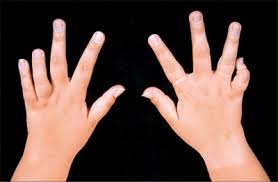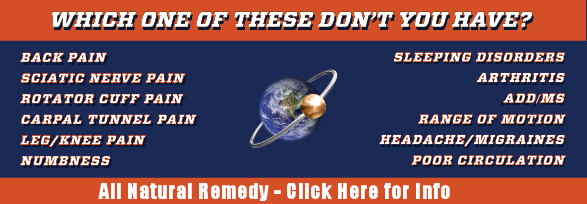 When pain occurs on both sides of the body and is symmetrical it is called symmetric psoriatic arthritis. More than five joints are often affected and it appears that more women than men are at risk for symmetric psoriatic arthritis. The psoriasis that is associated with this condition tends to be more severe. Another form of psoriatic arthritis is distal interphalangeal joints, which is rare and occurs mostly in men. In this type, the smallest joints closest to the nails of the fingers and toes are affected.
When pain occurs on both sides of the body and is symmetrical it is called symmetric psoriatic arthritis. More than five joints are often affected and it appears that more women than men are at risk for symmetric psoriatic arthritis. The psoriasis that is associated with this condition tends to be more severe. Another form of psoriatic arthritis is distal interphalangeal joints, which is rare and occurs mostly in men. In this type, the smallest joints closest to the nails of the fingers and toes are affected.
Another form is called spondylitis which causes inflammation of the spine as well as a stiffness and pain in the neck, lower back or sacroiliac joints. In approximately 50% of those who present with spondylitis a genetic marker can also be found. The fifth type is destructive arthritis which a small percentage will experience. This is a severe, painful and disabling form of psoriatic arthritis which destroys the small bones of the hands and leads to permanent deformity and disability. (3)
Aside from the arthritis and changes in the spine, psoriatic arthritis can also inflame other organs in the body. Inflammation of the colored part of the eye can cause iritis. Corticosteroids are sometimes necessary to prevent blindness. Inflammation around the lungs causes chest pain. Inflammation of the aorta can cause leakage of the valves leading to heart failure and shortness of breath.
Doctors have noted that 80% of patients who suffer from psoriatic arthritis will also have pitting and ridges seen in the fingernails and toenails. These particular nail changes are observed in only a minority of patients who also experienced psoriasis but do not have arthritis. There is also an increasing frequency of individuals who have psoriatic arthritis and also suffer from acne.
Your physician or rheumatologists will assess the signs and symptoms you present with and try to rule out other causes of joint pain, such as osteoarthritis. The physician will often recommend x-rays, tests of the joint fluid, blood tests for sedimentation rate and rheumatoid factor and will perform a thorough physical examination. (4)
References:
(1) American Academy of Dermatology: Psoriatric Arthritis
http://www.aad.org/skin-conditions/dermatology-a-to-z/psoriatic-arthritis
(2) American College of Rheumatology: Psoriatric Arthritis
(3) National Psoriasis Foundation: Types of Psoriatric Arthritis
http://www.psoriasis.org/psoriatic-arthritis/types
(4) Johns Hopkins Arthritis Center: Psoriatric Arthritis
http://www.hopkinsarthritis.org/arthritis-info/psoriatic-arthritis/
Resources:
MayoClinic.com: Psoriatric Arthritis
http://www.mayoclinic.com/health/psoriatic-arthritis/DS00476
National Psoriasis Foundation: Diagnosing Psoriatric Arthritis
http://www.psoriasis.org/psoriatic-arthritis/diagnosis
| Advertisement | |
 |
|



Leave a Reply